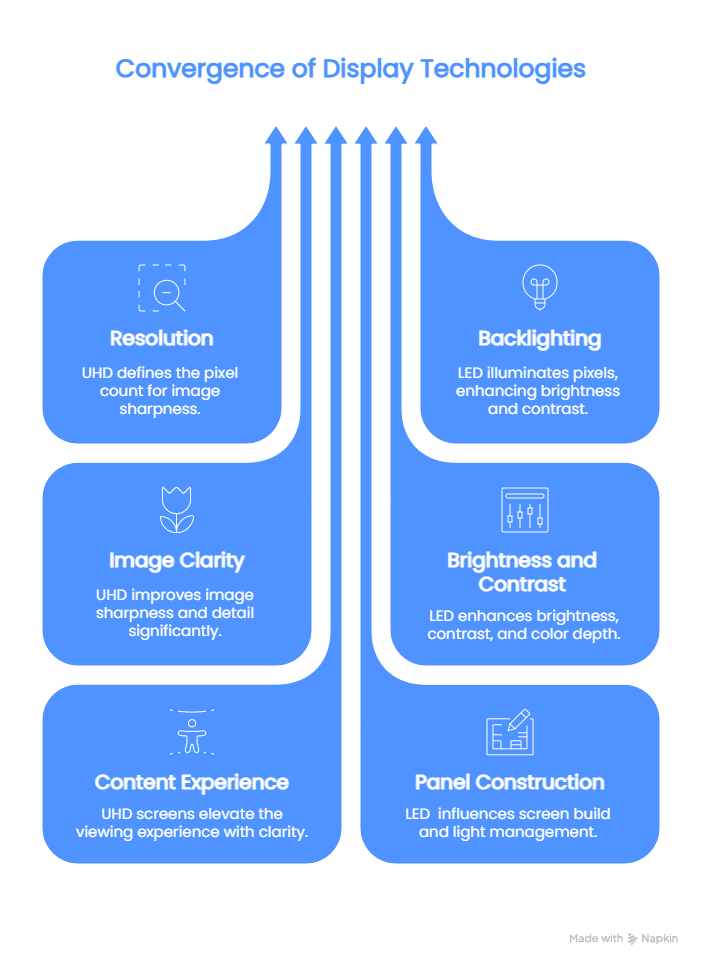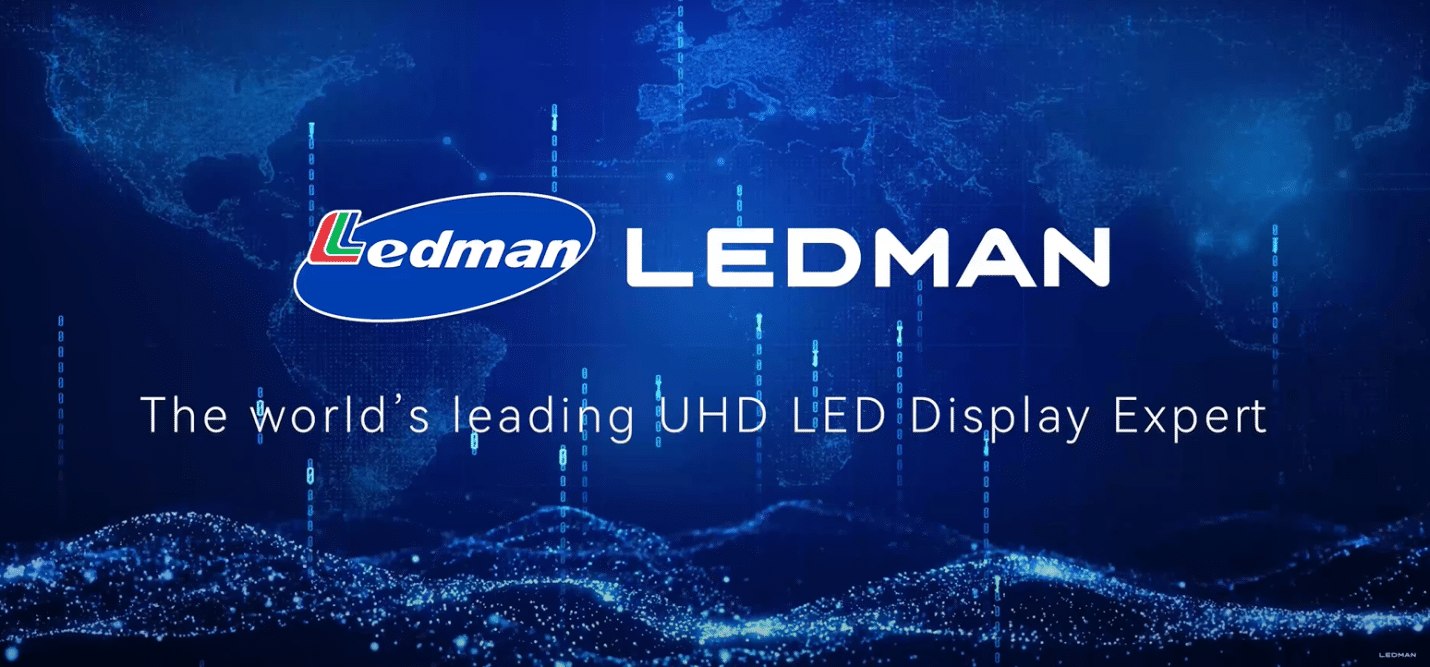Display technologies have become a major part of our daily life, from streaming movies at home to working on high-resolution monitors in offices. With so many options available, it is easy to confuse terms that often appear together.
UHD and LED are two of those terms that can easily be confused, yet they describe entirely different aspects of a screen. UHD refers to resolution, while LED defines the lighting method behind the panel. This article acts as a comprehensive UHD vs LED debate and explains all the differences clearly, while also providing guidance on how to choose the right display for your needs.
Understanding UHD
Let’s have a look at UHD first in this UHD vs LED debate.
UHD stands for Ultra High Definition and refers to a display resolution of 3840 × 2160 pixels. This format provides four times the detail of Full HD, creating sharper images and cleaner edges. Viewers can easily notice the difference in scenes that contain fine textures, fast movement, or high levels of detail.
Because of these qualities, UHD has become a popular choice for modern televisions, high-performance monitors, and home theater setups. It allows movies, games, and digital content to appear with clarity that feels closer to real life.
Understanding LED
Now let’s have a look at the LED in this LED vs Ultra HD debate:
LED stands for Light Emitting Diode and in displays it describes the technology used to light the screen. Earlier LCD panels relied on fluorescent tubes, but LEDs replaced them with a system that is more energy efficient and capable of producing brighter results. This change not only lowered power consumption but also improved the consistency of brightness and contrast across the panel.
LED displays can be found in different types. Edge-lit LED places the lights around the borders, keeping the screen slim but with less even illumination. Full-array LED distributes diodes across the entire panel, allowing better local dimming and uniform lighting.
OLED uses organic diodes where every pixel produces its own light, creating very deep blacks and rich colors. Mini-LED takes the same concept further by using much smaller diodes, offering finer control of brightness and stronger performance in darker scenes.
Key Differences Between UHD and LED
UHD and LED are often mentioned together, but they describe different aspects of a display. Here is the difference between UHD and LED:
- Resolution vs. Backlighting Technology: UHD defines how many pixels make up the image, while LED explains how those pixels are illuminated.
- Image Clarity vs. Brightness and Contrast: UHD directly affects sharpness and detail of the image, while LED affects brightness levels, contrast, and color depth.
- Content Experience vs. Panel Construction: UHD screens enhance what you see, while LED relates to how the screen is built and how it manages light.
A single television can combine both, which is why many models are labeled as UHD LED TVs. This means the set offers high resolution powered by LED backlighting, bringing both technologies together in one device.

How to Choose Between UHD and LED
Let’s see how to choose between UHD vs LED:
- Movie lovers: UHD resolution brings cinematic detail to life, making films sharper and more engaging on large screens.
- Gamers: UHD paired with fast refresh rates and low response times creates smoother gameplay and helps reduce lag.
- Everyday TV watching: LED displays remain affordable, offer strong brightness, and are a practical choice for family rooms and bedrooms.
- Professionals: UHD monitors are highly valued for tasks such as editing, photography, and design, where accuracy and fine detail are critical.

Conclusion
UHD vs LED describe different parts of display technology, yet both shape the viewing experience. UHD delivers the resolution that makes images sharper, while LED provides the light and contrast that bring those images to life. Most modern screens combine the two, giving users the ultimate viewing experience.
A strong example of this combination is found in LEDMAN LED UHD display technology. Established in 2004, LEDMAN has grown into a global leader with expertise in Micro LED and COB-packaged UHD displays. Their products feature PSE energy-saving technology, which lowers electricity costs while supporting sustainability goals. With more than 50 independent patents and thousands of installations worldwide, LEDMAN has proven its capability to deliver both performance and efficiency.
From ultra-thin Micro LED displays to large UHD conference systems and outdoor commercial panels, LEDMAN’s solutions highlight how resolution and lighting can work seamlessly together. Contact them to get top-tier UHD solutions!

